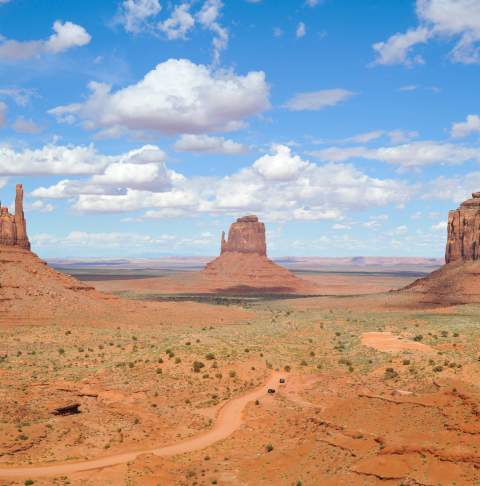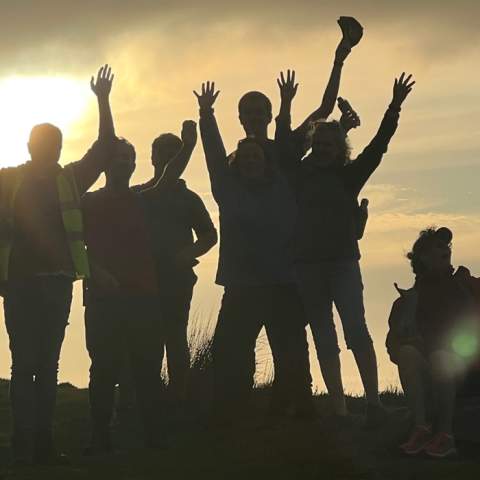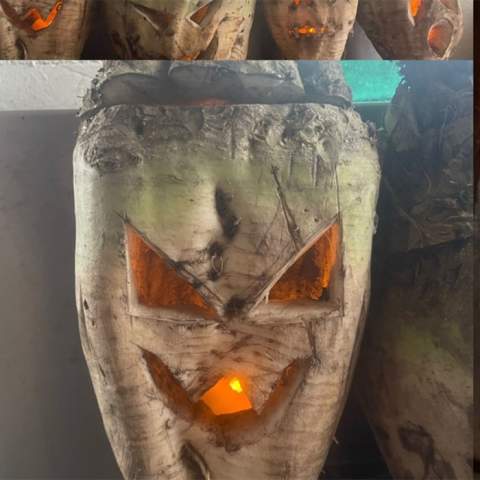Biodiversity Flourishes Along Kerry's Greenways
In the emerald landscapes of County Kerry, where the Tralee to Fenit Greenway and the Listowel to Limerick Greenway weave through postcard scenes, nature has found a sanctuary to thrive. A product of the County’s vision for sustainable development and renowned community spirit, Kerry’s greenways not only provide scenic routes for walkers and cyclists but also serve as corridors for rich biodiversity just waiting to be explored.
Tralee to Fenit Greenway: A Natural Haven
The Greenway covers 13.6km of scenic beauty along the old Tralee to Limerick railway line. Its development and preservation not only rejuvenated a disused feature of the area but created a haven for diverse flora and fauna. The Tralee Greenway Biodiversity Trail report highlights the remarkable biodiversity along this route, showcasing the intricate balance of ecosystems that have thrived in the wake of the greenway's development.
Biodiversity highlights for the greenway include:
Tralee Bay
The stunning Tralee Bay provides a range of marine habitats including mudflats, estuaries, rocky seashores, sand dunes and more, in turn supporting a variety of species some of which are endangered. For example, the undulate ray found in the bay is listed as endangered on the Irish Red List for cartilaginous fish and the IUCN Red List. Research has identified Tralee Bay as a likely nursery habitat for the species, making Tralee Bay key to the undulate ray’s survival. The bay is also frequented by bottlenose dolphins, angel sharks and more – and is one of the only self-seeding wild Irish oyster fisheries found in Europe.
Hedgerows
The vibrant hedgerows running along the greenway are an essential haven for the more than 50 species of Irish birds that use them. Thirty-five of these species nest in the hedgerows, and several species remain in the area year-round such as robins, blackbirds, wrens and the distinctive pied wagtail. Hedgerows provide food, shelter, perches and song posts, as well as protective corridors for the birds’ movement.
Greenway Geology
The bedrock of the Tralee to Fenit Greenway is largely made up of varying forms of limestone, sandstone and shale, with formations on display at several points along the route. The limestone walls close to Fenit are covered in eye-catching ivy, while other exposed limestone faces display dozens of brilliant plant species. The exposed shale cliff face near Oyster Hall reveals repeating layers of bedrock, reflecting changing sea levels over time, and various features like shale kinks and limestone bedding planes offer important glimpses into how the land has moved and evolved over time.
Listowel to Limerick Greenway: A Symphony of Nature
The lush rural countryside that holds the 16km Greenway unfolds a diverse landscape that is rich in history and biodiversity. The Listowel Greenway Biodiversity Trail report sheds light on the ecological wonders that have flourished along this transformative route.
Biodiversity highlights for the greenway include:
Pollinators
As with the Tralee to Fenit Greenway, hedgerows play a critical role in the beauty and benefits of the Listowel to Limerick Greenway. In particular, the variety of flowering plants found along the greenway attract a number of helpful pollinators like bees, butterflies and other insects. These pollinators are crucial to the health of the hedgerows due to their role in plant reproduction and the growth of fruits and seeds that support other animals. Supporting plant health is also important for balancing the ecosystem and reducing the need for harmful pesticides, and to maintain soil health and control erosion.
Oaks
First brought to Ireland more than 12,000 years ago by migrating birds and mammals, oaks have played a valued role in Irish culture and traditions for centuries. They have featured in ceremonies, filled agricultural needs and provided shelter to residents of Ireland from people to pheasants. Oak trees along the greenway support thousands of species, including Ireland’s native red squirrel, primarily by providing a place to eat, shelter and breed.
Bats
The greenway’s woodland corridor and overbridge provide important habitats for Ireland’s bats, which use a variety of landscapes throughout the year as they feed, roost and travel. There are nine bat species confirmed resident in Ireland, and they are most often spotted just after sunset in the warmer months. Bats in Ireland hibernate in the winter, so won’t be spotted from November to March, and they tend to emerge after dusk to avoid winged predators.






